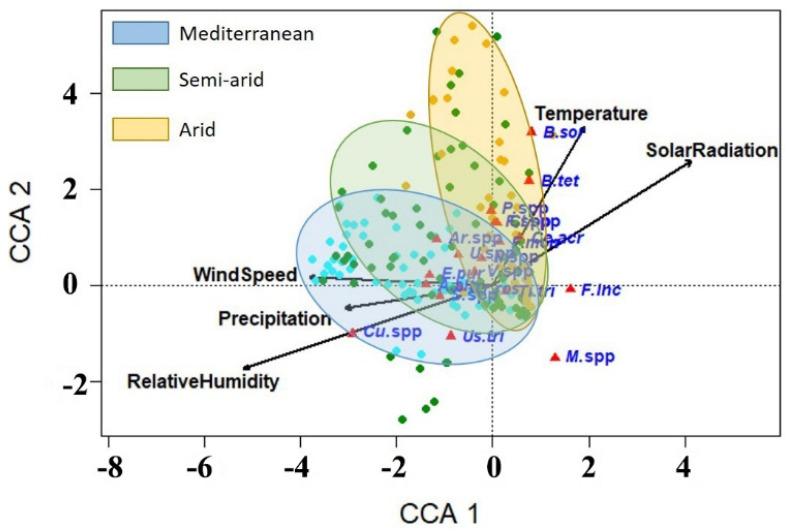Figure 7.
Ordination diagram of canonical correspondence analysis of seed-borne fungi in wheat grain samples from 25 wheat-growing governorates with five explanatory weather variables. Red triangles are fungal pathogens and arrows are weather variables. A. alt = Alternaria alternata, Ar. spp = Arthrobotrys spp., B. sor = Bipolaris sorokiniana, B. tet = Bipolaris tetramera, Ce. acr = Cephalosporium acremonium, Cl. spp = Cladosporium spp., Cu. spp = Curvularia spp., E. pur = Epicoccum purpurascens, F. inc = Fusarium incarnatum, F. spp = Fusarium spp., F. ver = Fusarium verticillioides, M. spp = Mucor spp., N. spp = Nigrospora spp., P. spp = Penicillium spp., S. spp = Stemphylium spp., Ti. tri = Tilletia tritici, Tr. ros = Trichothecium roseum, U. spp = Ulocladium spp., Us. tri = Ustilago tritici, and V. spp = Verticillium spp. Each small solid circle represents a sampling site where a pathogen was detected and grouped into climatic zones of Egypt: Mediterranean in blue, semi-arid in green, and arid in yellow.

